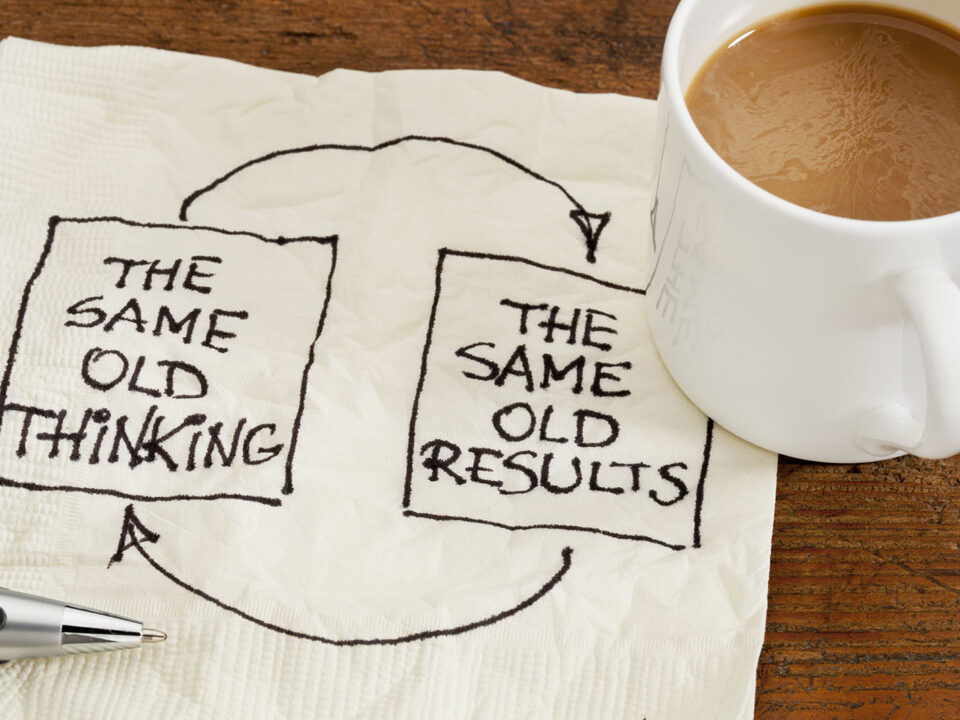
Look Beyond the Posters: How Emotional Dissonance Can Hamstring Employee Motivation

Winston-Salem Businesses Model the Power of Embracing Organizational Change, With or Without a Catastrophe
Critical Aspects For Creating A Successful, High Performing Team

Have you ever been a part of a TEAM, a true team? Whether it is in your profession, an athletic team, or in your community, chances are that if you have, you remember the experience fondly and it is or was one of the most rewarding in your life.
What is the definition of a team?
In the book, “The Wisdom of Teams”, it was defined as “a small number of people with complimentary skills who are committed to a purpose, performance goals and an approach for which they hold themselves mutually accountable.”
As a college athlete, I had a coach that constantly spoke of the concept of Team. From the first pre-season practice to the last tournament game she fostered the notion that we were a team. We had shirts that were branded with the slogan-“Together, Everyone, Achieves, More”. Every success and every failure was attributed to the team and rarely to an individual. If pre-season run times were not reached, we all kept running until every member had succeeded. If our shooting percentages as a team were higher than 60% we celebrated together. If our cumulative GPA was lower than 3.0 we all had to attend study hall together. As a result of her coaching and the team dynamic fostered, we achieved more success than any team at the university in the win-loss record, shooting percentages, rebounds, and a slew of individual accolades. Our team, our coach and two of our players were inducted into the schools’ hall of fame. It was a truly great experience and showed me that a group of talented individuals with the right leader can accomplish truly amazing things. We try to bring that experience to other organizations that we work with daily.
There are many important aspects of creating, developing and fostering a team, especially a high performance team.
Why do you need a team?
Before you assemble or work with a group, you as well as all of the individuals need to understand the need for a team and how it will benefit you as an organization. Having a team allows you to accomplish more, prevents bottlenecks and allows you to have better, higher quality execution of each task. It enables you to put people in places to do detailed work while you manage the bigger plan. A team brings in more diverse perspectives and better ideas allowing you to maximize your strengths while minimizing weaknesses. It will also prevent you from being burned out from going it alone.
What are the requirements to be a team?
Performance goals must be clearly identified and communicated to each of the members. Team members must fully support each other, the goals and the overall team mission. They will need to accept that they will need to work together collectively to accomplish the goals which should be very ambitious and even slightly over-reaching to promote and ensure collaboration. Each member should know their role and how they will use their unique abilities to bring the group success. A set of ground rules is required as well as guiding principles of how the team is going to work together. Everyone will need to commit to working within the teams priorities and plans and accept that change and diversity will be part of the process. Each team member must be respectful of others but be allowed to be direct and honest with their feedback and input. Establish accountability up front and demand that each member is dependable and capable to complete their tasks. Overall you must have people who can remain positive and constructive and genuinely be happy about sharing success.
What makes a successful team?
Each team member has to share a commitment to excellence. Leaders should encourage members to get to know each other, be personable and have fun. The team should have a common set of performance goals and skill sets that are complementary to the other members. Leaders should encourage a sense of ownership and team members should hold each other mutually accountable. Most importantly the leader must attribute failures and successes to the team; they should win and lose together.
How do you foster a team?
Be a mentor, a good leader and always remain positive. Model the behavior that you would like them to use with each other. Be the first to offer assistance when someone gets stuck and demonstrate that you are a team player. Be on time with reports and meet deadlines that have been set and insist that team members meet theirs as well. Ask for help when you need it, don’t try to do every task yourself, encourage collaboration and reward team effort over individual accomplishment. As a leader you will need to think ahead and be prepared. While you always reward individual effort, it is the sum of the work that is most important, focus on team success. Make sure you practice clear communication and define responsibilities. Encourage creativity by allowing people to safely express their ideas during the creative process. If conflict should arise, work quickly and diligently to resolve it. A true leader builds commitment to the team, fills gaps, shifts and fills roles where appropriate, removing road blocks for others as they arise. Do not do the work for them, make them think for themselves. Exercise the right balance of patience and action and understand that they will constantly evolve.
These are just a few of the pieces of the puzzle that are weaved together to make a strong team dynamic. Creating, developing and leading a team can be a huge undertaking but a very rewarding one with the right set of skills and reinforcement. We have found that teams within organizations sometimes suffer when they are over managed and under-led. The wrong team dynamic can make matters worse. Great teams can deliver consistently when shared commitment encourages a healthy fear of failure rather than debilitating insecurity. Leaders need to be mindful of how the group is performing and allow situations to develop where they can see the team in action and how they think. Then be ready to help them, remove roadblocks, and coach them on how to become more effective. Do this so that your team will rely on each other more.
-
Do your leaders and teams work well together with and without the leader, if necessary, across the organization?
-
Do you feel like your entire team is on the same page?
-
How do you ensure your team members are fully engaged?
If your organization needs help guiding and developing teams call our experts to help at 1-800-786-4332 or email Candace at cclemmer@appliedvisionworks.com.
To hear more about how leadership, teamship and cultureship are all interrelated. Watch this “Drive Through With Don” by clicking here.








